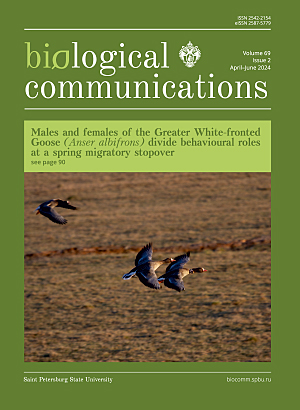Acetamidase gene as a new plasmid marker for CRISPR modification of industrial and laboratory Saccharomyces yeasts
DOI:
https://doi.org/10.21638/spbu03.2024.205Abstract
Genetic manipulation of laboratory yeast strains relies on the use of auxotrophic markers. However, such markers are usually missing and undesirable in industrial yeasts. The standard option is then to use antibiotic resistance markers such as KanMX. However, the required antibiotic concentration can vary significantly depending on the growth medium and yeast strain, often resulting in a high proportion of false-positive colonies. An alternative selection procedure could be based on the ability of yeast cells to utilize an uncommon source of nitrogen. Many yeasts, including Saccharomyces, are unable to utilize acetamide. This ability can be conferred by a single acetamidase gene. The CRISPR/Cas9 technology has an advantage over previous methods of yeast modification in that it allows genomic modifications to be introduced without leaving a selectable marker in the genome. Driven by these two motives, we constructed a CRISPR/Cas9 plasmid with an acetamidase gene from the fungus Aspergillus nidulans, which allows the selection of yeast transformants on medium with acetamide as sole nitrogen source, and tested this plasmid with a triploid wine strain and a haploid laboratory strain.
Keywords:
wine yeast, selective marker, acetamidase gene, CAR1 gene, CRISPR/Cas9, acetamide, arginine, nitrogen source
Downloads
References
Downloads
Published
How to Cite
License
Articles of Biological Communications are open access distributed under the terms of the License Agreement with Saint Petersburg State University, which permits to the authors unrestricted distribution and self-archiving free of charge.





